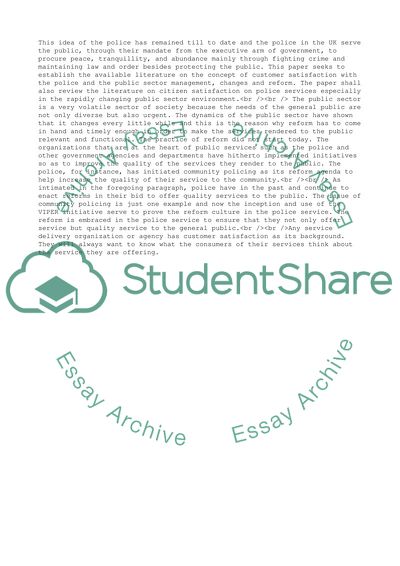Cite this document
(Customer Satisfaction with the Police Literature review, n.d.)
Customer Satisfaction with the Police Literature review. Retrieved from https://studentshare.org/management/1721216-literature-review-of-customer-satisfaction-of-the-police-service
Customer Satisfaction with the Police Literature review. Retrieved from https://studentshare.org/management/1721216-literature-review-of-customer-satisfaction-of-the-police-service
(Customer Satisfaction With the Police Literature Review)
Customer Satisfaction With the Police Literature Review. https://studentshare.org/management/1721216-literature-review-of-customer-satisfaction-of-the-police-service.
Customer Satisfaction With the Police Literature Review. https://studentshare.org/management/1721216-literature-review-of-customer-satisfaction-of-the-police-service.
“Customer Satisfaction With the Police Literature Review”. https://studentshare.org/management/1721216-literature-review-of-customer-satisfaction-of-the-police-service.


